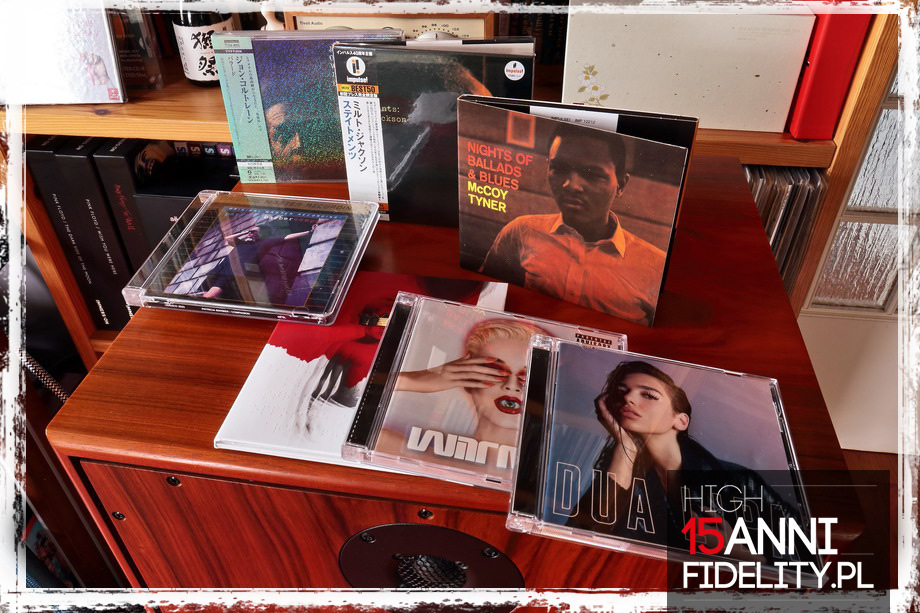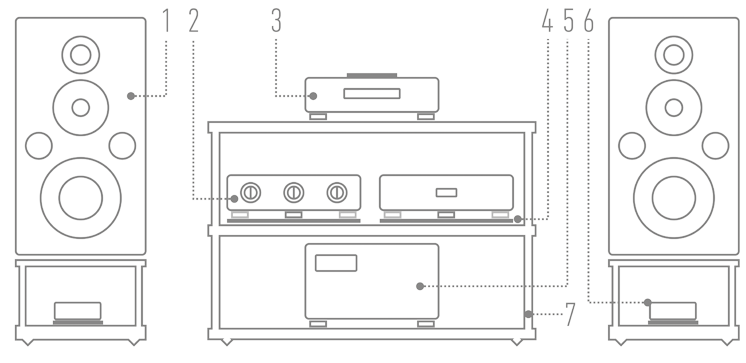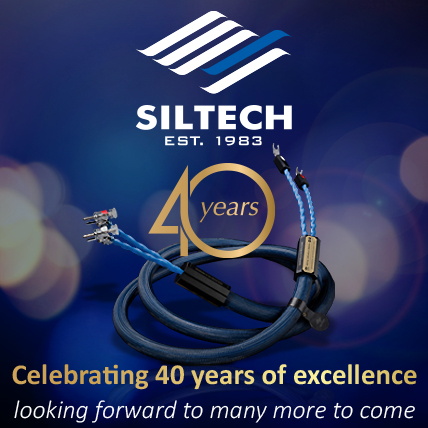|
Loudspeakers | standmount Antimatter
Manufacturer: ANTIMATTER AUDIO |


|

|
PREMIERE

However, only in 1924 another patent was filed, which is the basis of almost all modern dynamic drivers. It was granted to Messrs. Chester W. Rice and Edward W. Kellogg. The main difference between this solution and the previous one was that the drivers mechanical parameters were selected in such a way that the system's own resonance was lower from the range from which the mechanical impedance of the membrane is constant. Although the materials used to manufacture the drivers, production methods, etc. Have been changing, the basic concept of a dynamic speaker has not changed for 75 years. | COAXIAL Within a paradigm in which the coil moves in the magnetic field of the permanent magnet (formerly the electromagnet), which then moves the membrane, the designers tried to find the best solution for problems such as: limited frequency response, low efficiency, non-linearity, high distortion, etc. We are interested in 1926, when Herman J. Fanger received a patent for his idea, which we are talking about today: a "coaxial driver". In his description he pointed out that it is a system of two drivers in which the tweeter with its own diaphragm and short horn can be placed in front of the diaphragm of a larger driver or in its center. The first commercial implementation of this idea was the two-way Altec Lansing Uplex Coaxial speaker, model 604, from 1943. Also Tannoy used this solution in the Dual Concentric driver. The tweeter was in it on the axis of the mid-woofer, but the acoustic centers of both transducers were not in the same plane (one diaphragm was placed closer to the listener and the other one was further away). Today, such brands as: Thiel, Cabasse and Piega presented their versions of coaxial transducers. Also Musikelectronics Giethain presented an interesting solution. The most well-known coaxial system, however, is the Uni-Q, developed in the late 1980s by KEF. This system assumes not only the coaxiality of the dome tweeter and the cone of the mid-woofer, but also the compatibility of their acoustic centers. Over the years, this system has been refined and is used in the loudspeakers of this company to this day, and its versions can be found in the products of TAD and Pioneer. In 2017 a Polish company ANTIMATTER introduced their take on the topic. | LIGHTING There are two man (actually cousins) behind Antimatter, namely Messrs. Bogdan and Łukasz Wiśniewscy. Mr. Bogdan is responsible for drivers and crossovers, and Mr. Łukasz for cabinets. Both are involved in listening sessions and final fine-tuning of their speakers. The company's lineup includes two models of compact speakers: Light and Lighting. The first floor-standing model called Nova is in development. Everything in these speakers revolves around a two-way, coaxial driver with a cone diaphragm of the mid-bass section and a dome tweeter. This loudspeaker was designed and made in-house. Individual components are outsourced to external contractors, however, they are assembled by Mr. Bogdan.  BOGDAN WIŚNIEWSKI | ŁUKASZ WIŚNIEWSKI 
Using the knowledge and experience gained while developing the Light system, we have developed a new coaxial driver dedicated to an even larger cabinet. The driver's coil weighs, together with the carcass and speaker terminals, less than 5 grams. For comparison, let's say that the fastest and lightest Eton drivers feature a coil weighing a dozen or more grams. Such a low weight could only be reached by winding the coil using aluminum wire. We drive the ultra-light coil with a neodymium magnet. Everything in this design is extreme, because only in this way, in our opinion, we could create a "transparent" speaker (the system's instant response to alternating electric current in the coil), introducing as little as possible to the listening path. In addition to the obvious limits associated with a small membrane area and small cabinet (18 l), we tried to build sets as neutral sounding as possible. I mean ones, that add as little to the sound from themselves as possible. 
Coaxial drivers (such as our 6-inch ones) require a properly profiled waveguide for the tweeter dome (the "crown" in the center - we can also make it in black) and painstaking development of its design using trial and error approach. We had to shape the waveguide so that it was suitable for the shape of the driver's membrane in which it was embedded. The latter in turn has to be fairly flat to absorb the tweeter wave without wideband “holes” (to avoid short wave propagation shortcomings), but close enough to the waveguide so that it is rigid enough for a good bass response and proper proportions between ranges. It all would be useless if the rubber upper suspension (so-called O-ring) wasn't properly profiled. It must be completely different from what most drivers on the market feature. In the initial phase of the project, the membranes motors were so complementary that we received a 103-decibel result for the tweeter and 92 decibels for the low-midrange driver in pure T/S parameters. Such drivers, however, required the use of large coil values in the crossover, which significantly affected the final price of the product. Ultimately, we've achieved the necessary compromise between minimalistic crossovers and high sound quality. The lower pole piece, in the test phase, was mounted on the core by threading to experimentally determine the optimal proportions in the longitudinal positioning of the two-driver system. Having an ability to directly impact all drivers' parameters, we were also tempted to use a prototype that did not require any crossover at all (relatively flat and even SPL characteristics of both drivers). However, this model sounded only good in expensive listening systems and the cheaper amplifiers generated a very high third harmonic. For such a system to make sense, it was necessary to interfere in the 1 - 3 kHz band. And this was a deviation from the neutrality that was the goal of our project. In addition, such a system was characterized by low sensitivity. 
Designing a crossover for the Lighting sets was a great audiophile fun for us. The loudspeakers turned out to be so sensitive to any changes in electronics and components that playing blind tests - for example: "which capacitor was used this time?" - became too simple :) Finally, considering the sound quality in relation to prices and versatility of systems our speakers may work in, for the Lighting project we decided to use Jentzen Alumen Z-cap capacitors, a Wax-Coil for the tweeter, the Mundorf air coil in the low-midrange system, and the beautifully sounding Duelund Silver/Graphite resistors for a resistor ladder. The crossover frequency is 4.5 kHz. ▪  The basis of the tested Lighting model was the slightly smaller Light. A new coaxial driver dedicated to a larger cabinet was developed especially for this project. At its heart one finds an ultra-lightweight mid-woofer coil. "The low weight of the coil could only be achieved by using pure aluminum, which is extremely rarely used by loudspeaker manufacturers, due to the complicated method of a serial soldering of this conductor." says Mr. Bogdan. The coil is driven by a double neodymium magnet mounted around a core designed to center two drivers coaxially. The tweeter with a one-inch silk dome is loaded with a properly profiled waveguide integrating the sound waves emitted by both speakers. The rubber suspension of the diaphragm is almost flat - it has been designed to minimize the impact of short wave diffraction, which is extremely sensitive to any irregularities in its propagation area. 
From the conversation with both men I learned that the shape of the suspension is only half the success, and the material it is made of is equally important. In company materials one reads: "the upper suspension of the membrane not only has a high rate of reversible deformation under the influence of mechanical factors and temperature, but above all has a very low impact on the overall compliance of the loudspeaker suspension. "Creation of rubber based on EPDM (ethylene propylene diene monomer) with an admixture of components increasing its durability and lightness was a big challenge. The driver features a ø 170 mm (6.5”) membrane made of carbon fiber with an admixture of fiberglass. As Mr. Bogdan says, thanks to connecting the crossover chamber to the main loudspeaker partition, they gained several liters of volume without a need of significantly changing external dimensions. The crossover features Jantzen Alumen Z-cap capacitors from the company's top line, and Viablue speaker terminals. 
To eliminate the cabinet's own resonances, it was made in sandwich technology, with two baffles made of chipboard and MDF. The crossover was placed in the lower section of the driver's chamber, and a significant part of it was covered with damping material. The outer part of the housing is covered with a special material that reduces reflection from the acoustic baffle and high-gloss varnished wood veneer. Currently two types of veneer are offered, the loudspeaker can also be completely covered with material resembling a rigid fabric. | HOW WE LISTENED TO IT The company owners personally delivered and set up the speakers in my room. We also listened to them together. The monitors were placed on old, solid Sonus faber stands and were toed-in in such a way that the axes crossed on my head. I compared them to my reference, Harbeth M40.1 speakers. They were driven by the Soulution 710 power amplifier. I suggest driving them rather with powerful amplifiers with good current efficiency. However, they do not have to be very expensive devices - Antimatter speakers will also work great with devices for ordinary people. |
The source was the CD-35 HF Edition (№ 1/50), placed on the pneumatic Acoustic Revive RAF-48H platform. It's a player with tube output. Also the Ayon Audio Spheris III linestage is a tube device. All the cables were Siltech's Triple Crown.  Recordings used for the test (a selec- tion) | Impulse!

| Lighting and two Messrs W. 
WOJCIECH PACUŁA: Are you happy with what you've just heard? Did you expect something different? BW: There are always two side of the story. If we design a speaker that is to be sensitive to any changes in the environment, then it can be a blessing or a curse in a given system. Here, at the moment I knew that they would not play precisely because there are shelves behind and doors at the side. So I had to sit exactly in the middle to catch a precise picture - you can clearly hear that these are speakers sensitive to such changes and that they are chimerical as far as their placement is concerned. Additionally, you can immediately hear the nature of the amplifier that we connect them to. I had some ideas about how they could sound here even though I'd never listened to this system before. We listened to them using entry-level systems as well as ones with individual components worth 30,000 PLN. But never so expensive as this one. We were afraid that the system we'd used to tune these speakers had not allowed us to hear how they sounded like. I wanted to find a solution that would allow them to sound at least well in any system. And this system here is really fun. For us the most important element was the midrange, but supported by strong bass. When we were “tuning” this sound we hoped that these would be their main advantages - and, in my opinion, it worked :) I'm happy with what I've just heard here! So everything worked out? ŁW: In my opinion it was a really good sound. But to achieve that one needs a really good system that complements our speakers. Given an opportunity, our speakers will offer a beautiful sound. Can you see any ways to improve the performance even further? LW: We walked around Krakow's Old Market yesterday and there was a violin playing - smoothly but in an open way. There was no aggressive treble, but everything could be heard beautifully. We wanted to combine these two elements also in our speakers. | Lighting and me On June 1st 2008, the Universal Studios Hollywood building with film and music tapes burned down. Started accidentally by workers laying a new roofing paper on the roof of a neighboring building, fire destroyed most of the video and sound materials belonging to Universal. The so-called Building 6197 stored "master" tapes of the most artists who inspired the whole genre, rock, as well as tapes with jazz music. Among them was almost everything that was recorded for the Impulse label! Among them there were the master tapes of Art Blakey, Bill Halley, Chuck Berry, Count Basie, Ornett Coleman, Duke Ellington, Coleman Hawkins, Charles Mingus, Sonny Rollins and John Coltrane. Only few survived, the ones that were not there at the time, being for example remastered, among them the Love Supreme. The rest were irretrievably lost and we were robbed of an important part of our cultural heritage. I remembered this unbelievably sad story when in June, in his online issue of the Times Magazine published a feature entitled The day the music burned (accessed: 14.08.2019), picked up by the "Stereophile" in September editorial titled The day the music died (Vol. 42 No. 9). Probably all the albums of this label that I have were supervised by the producer Bob Thiele and were recorded by Rudy van Gelder, the sound producer of yet another legendary label - Blue Note. Unlike these, Impulse! albums do not offer such a coherent sound characteristics and maybe that is why they are not the object of worship, but of admiration at most. And this is a mistake. All you need to do is to listen to a few of their releases using the Antimatter speakers to appreciate how good and reliable these recordings are. Maybe there is no "wow!" effect, these are not discs that recording that will impress you much in a few first minutes of listening. You will need more time to “accept” them but once you do they will stay with you for a longer time. The Lighting speakers presented these features without batting an eye. These loudspeakers offer an amazingly “cultural” sound and a very good resolution. They have their own world, their own sensitivity, it is also clear from the very beginning. However, it does not put these features in front of the recordings, it does not overshadow them, at most it introduces subsequent albums to the micro-cosmos it creates. First of all, they offer rather warm than bright sound. My megalomaniac part of the soul got out of the hint right at the beginning, saying that I am the reason for this and that for years I was writing about what natural sound is, to some extent I created the right climate for such sound, and the designers were influenced by it. Immediately, however, it was countered by another part, responsible for critical and realistic thinking, saying that the point is rather that it is one of the manifestations of the audio market maturation, a trait of progress in this field, and that my role in it was minimal. Anyway, the Antimatter speakers deliver a beautiful, focused color, in which there is no room for brightening. Interestingly, the sound is also very open, there is no impression of withdrawn treble, and there is a really great dynamics. Coltrane's saxophone from Ballads released on Platinum SHM-CD, McCoy Tyner's piano from Nights of Ballads & Blues, and finally Milton Jackson's vibraphone from Statements - all these instruments lived, had depth, slam and natural "flow". The soundstage is large, spacious and deep with them. It was difficult to pinpoint the dimensions of individual instruments, their precise shapes, because these are speakers that focus rather on "continuity" and not on "details". I would not look for details in this sound. Not because they are not there, but because so much is happening in terms of color and dynamics that there is not even time for it. Anyway, regardless of what we listen to, whether the Impulse!, ECM or Mobile Fidelity reissues - say Companion by Patricia Barber - every time we will be surprised with these speakers coherence. I think that this is the most important feature of these speakers, thanks to which you can listen to them as long as you like, with any recordings, as long as they are paired with good electronics (preferably with a powerful amplifier). When we sort it all out, we can admit that these are loudspeakers with their "own sound". It is a bit warm and devoid of irritating features in the upper midrange and treble areas. Their strongest sides are vocals, presented in a fantastic way, regardless of the origin of the recordings. They are supported by a nice, low, focused bass, which will be appreciated even by those who think that only floor-standing loudspeakers can deliver in this matter. I admit, I have not heard such nice bass from such small drivers, or at least I don't remember any such case. And the vocals will sound nice in every recording. They will be served a bit in the front, quite warm, but so that we immediately know whether it is a good quality recording or not. I listened to a few mainstream albums to check that out. Among them was Dua Lip's debut, Witness by Katy Perry, there was also Rihanna's Anti album. It's all music with dense production, high budgets and simply well prepared, at least when we think about the places where it is supposed to play. On a high-end system, however, high compression and a tonal shift towards upper part of the band become obvious. The Antimatter loudspeakers showed their problems, but not as significant flaws, but shortcomings - a small difference, but a significant one. Because I knew what good all well-recorded discs offered, and it didn't hurt what bad recordings intended for playing on a commercial, formatted radio bring with them. You can listen to them with Lighting without a problem, because they will sound quite well. | SUMMARY Because that's what these speakers have to offer - for lesser quality albums they are forgiving, and for the better ones demanding, setting a high bar for them. So you can listen to any music with them and you will never get to a place where you won't want to listen to some album because of the sound - only music will matter. Antimatter designers have achieved this primarily through excellent coherency, due to which the disadvantages of recordings are not exaggerated, high resolution, which gives a richness to the sound, as well as warming up the sound a bit. This is a common feature for many of the best systems, although – let me add – it is not the only way to achieve high-end natural sound. But in this case warmth defines the whole presentation. Plus there is also high dynamics and low, nice bass. Beautiful loudspeakers fully deserving our RED Fingerprint!  Cabinet | The speakers are heavy and well-made. They also look really nice. Made of MDF and chipboard, they feature no-resonant baffles, which shows that they are mechanically well damped. The sides are finished with natural, high-gloss lacquered veneer. Three versions of veneers are available: Wenge Cleoni, Rosewood Rio and light oak. The remaining walls are finished with material reminding me of soaked, stiff fabric. It is also possible to finish the whole cabinets with it. The whole looks completely different than most loudspeakers available on the market. Drivers | When thinking about a loudspeaker, we usually imagine it as a narrow cabinet with a row of drivers. Antimatter loudspeakers are different in this respect, reminding me of KEF monitors, such as the LS50 model. 
The front panel only shows the coaxial driver, mounted in such a way that no screws are visible. The are some on the back panel though - they are used to fix the nameplate with a pair of speaker terminals and the aluminum outlet of the bass-reflex. The crossover features high quality components. Internal wiring is made of multi-strand copper divided into three different sections. Each section has different amounts and thickness of conductors (several dozen in each section). The conductors are separated from each other by enamel. In turn, the whole conductors sections are separated from each other by an air insulator based on silicone tubes. The number of conductors in each section was selected bases on endless listening sessions. These speakers feature no grills. They were delivered in carton boxes but the manufacturer plans to prepare wooden boxes in the near future. ■  Technical specifications (according to manufacturer): Sensitivity: 86 dB/2,83 V/1 m |

|
Reference system 2018 |
|
 1) Loudspeakers: HARBETH M40.1 |REVIEW| 2) Line preamplifier: AYON AUDIO Spheris III Linestage |REVIEW| 3) Super Audio CD Player: AYON AUDIO CD-35 HF Edition No. 01/50 |REVIEW| 4) Stands (loudspeakers): ACOUSTIC REVIVE (custom) |ABOUT| 5) Power amplifier: SOULUTION 710 6) Loudspeaker filter: SPEC REAL-SOUND PROCESSOR RSP-AZ9EX (prototype) |REVIEW| 7) Hi-Fi rack: FINITE ELEMENTE Pagode Edition |ABOUT| |
|

|
Cables Analog interconnect SACD Player - Line preamplifier: SILTECH Triple Crown (1 m) |ABOUT|Analog interconnect Line preamplifier - Power amplifier: ACOUSTIC REVIVE RCA-1.0 Absolute-FM (1 m) |REVIEW| Speaker cable: SILTECH Triple Crown (2.5 m) |ABOUT| |

|
AC Power Power cable | Mains Power Distribution Block - SACD Player: SILTECH Triple CrownPower (2 m) |ARTICLE| Power cable | Mains Power Distribution Block - Line preamplifier - ACOUSTIC REVIVE Power Reference Triple-C (2 m) |REVIEW| Power cable | Mains Power Distribution Block - Power amplifier - ACROLINK Mexcel 7N-PC9500 |ARTICLE| Power cable | Power Receptacle - Mains Power Distribution Block: ACROLINK Mexcel 7N-PC9500 (2 m) |ARTICLE| Power Receptacle: Acoustic Revive RTP-4eu ULTIMATE |REVIEW| Anti-vibration platform under Acoustic Revive RTP-4eu ULTIMATE: Asura QUALITY RECOVERY SYSTEM Level 1 |REVIEW| Power Supply Conditioner: Acoustic Revive RPC-1 |REVIEW| Power Supply Conditioner: Acoustic Revive RAS-14 Triple-C |REVIEW| Passive filter EMI/RFI: VERICTUM Block |REVIEW| |

|
Anti-vibration Speaker stands: ACOUSTIC REVIVE (custom)Hi-Fi rack: FINITE ELEMENTE Pagode Edition |ABOUT| Anti-vibration platforms: ACOUSTIC REVIVE RAF-48H |ARTICLE| Isolators: |

|
Analogue Phono preamplifier: Phono cartridges:
Clamp: PATHE WINGS Titanium PW-Ti 770 | Limited Edition Record mats:
|

|
Headphones Headphone amplifier: AYON AUDIO HA-3 |REVIEW|Headphones: Headphone Cables: Forza AudioWorks NOIR HYBRID HPC |
main page | archive | contact | kts
© 2009 HighFidelity, design by PikselStudio,
projektowanie stron www: Indecity







 t just so happens that almost all audio reproduction techniques developed at the end of the 19th and the beginning of the 20th century are with us to this day. These are, on the one hand, electron tubes, on the other a vinyl record, or dynamic loudspeakers with a moving coil. We learned its basics in 1874, when Werner von Siemens, a German inventor and entrepreneur, founded an electrical and telecommunications company and for the first time in an application filed at the US Patent Office, described a driver with a moving coil.
t just so happens that almost all audio reproduction techniques developed at the end of the 19th and the beginning of the 20th century are with us to this day. These are, on the one hand, electron tubes, on the other a vinyl record, or dynamic loudspeakers with a moving coil. We learned its basics in 1874, when Werner von Siemens, a German inventor and entrepreneur, founded an electrical and telecommunications company and for the first time in an application filed at the US Patent Office, described a driver with a moving coil.

















